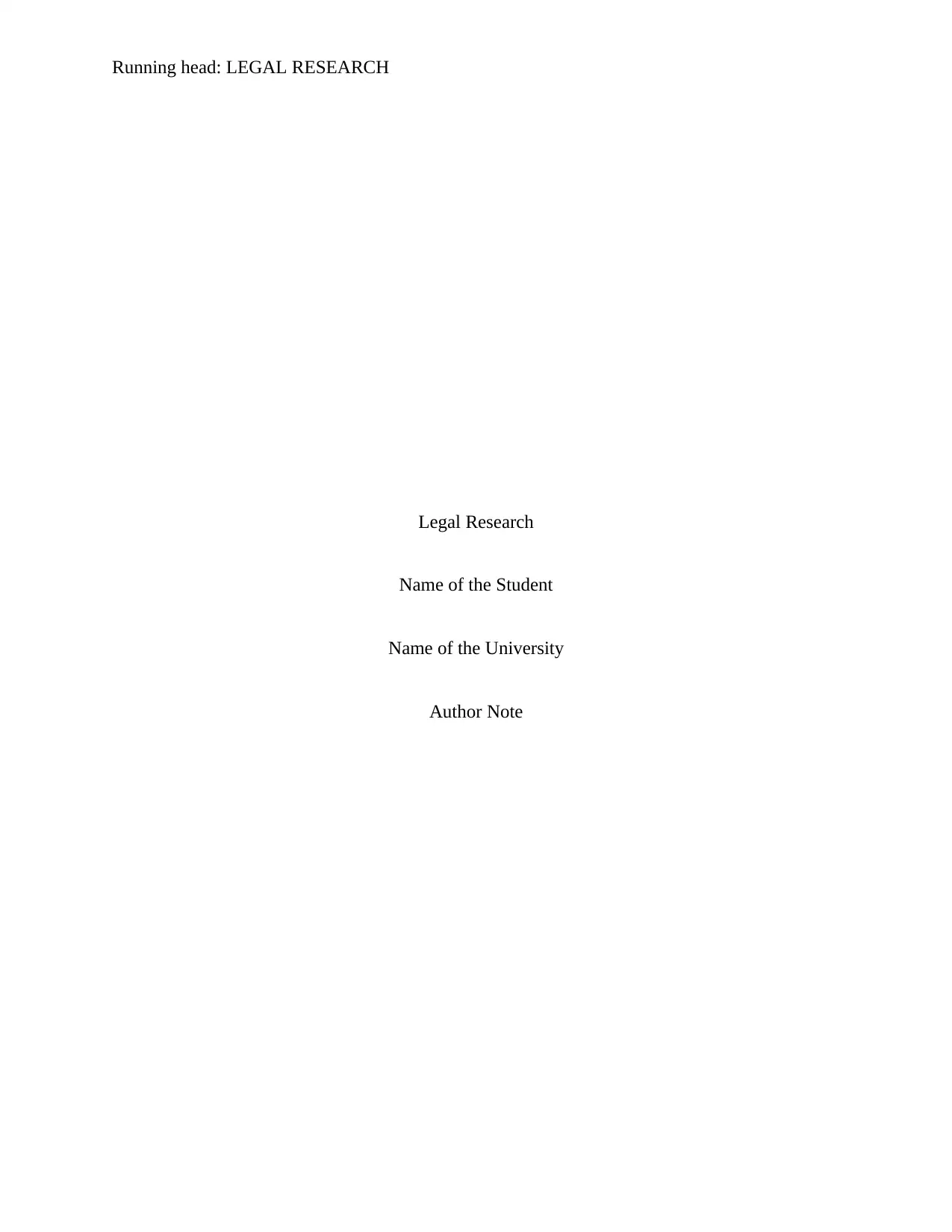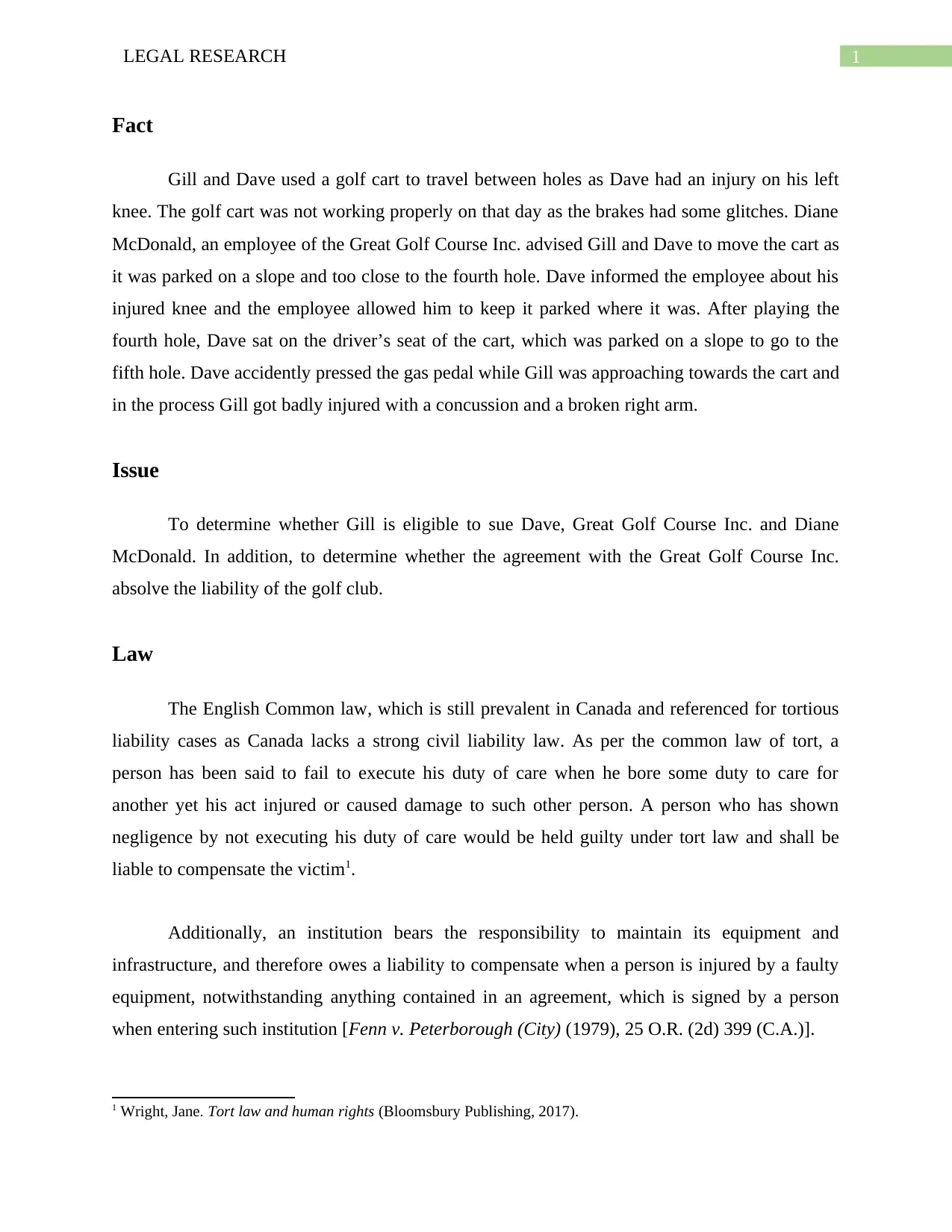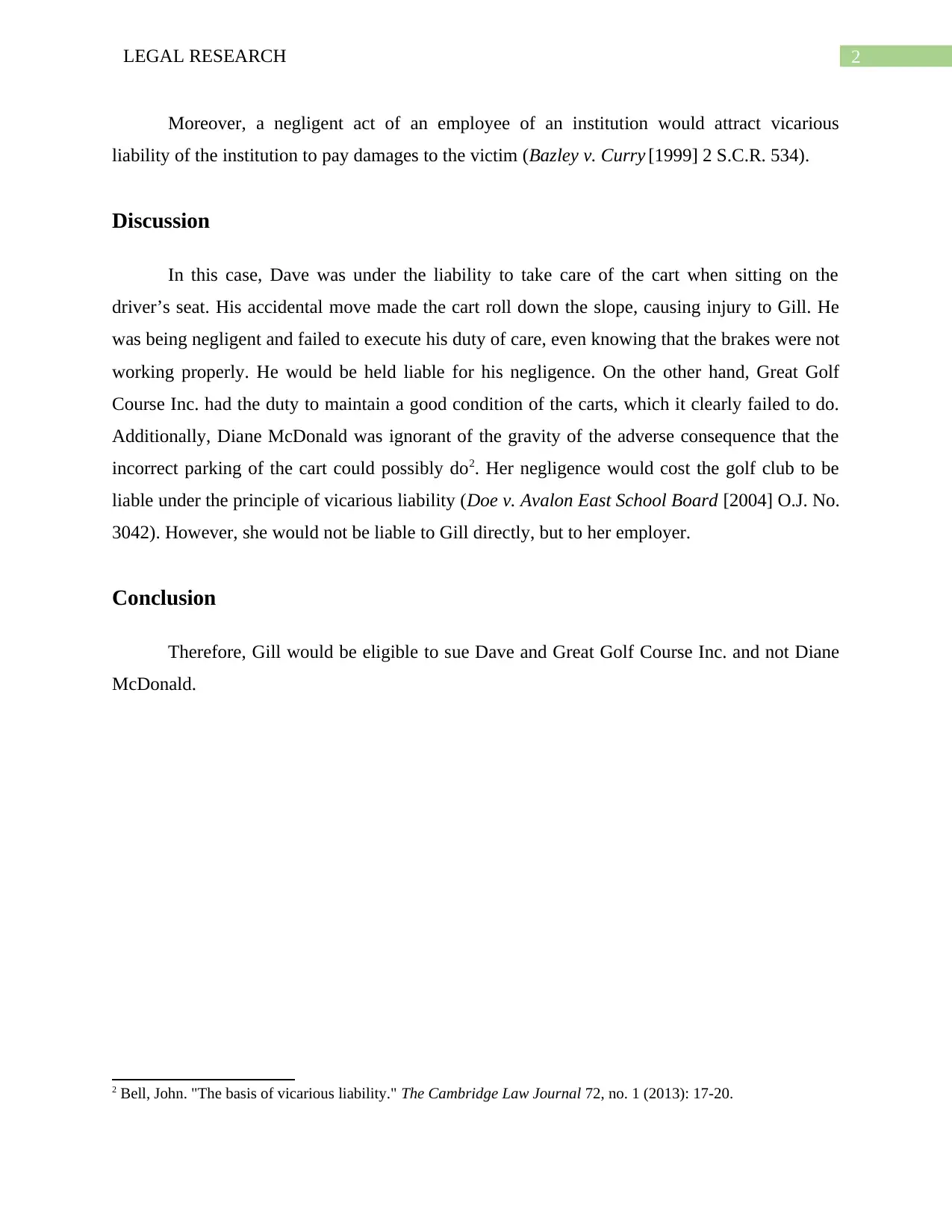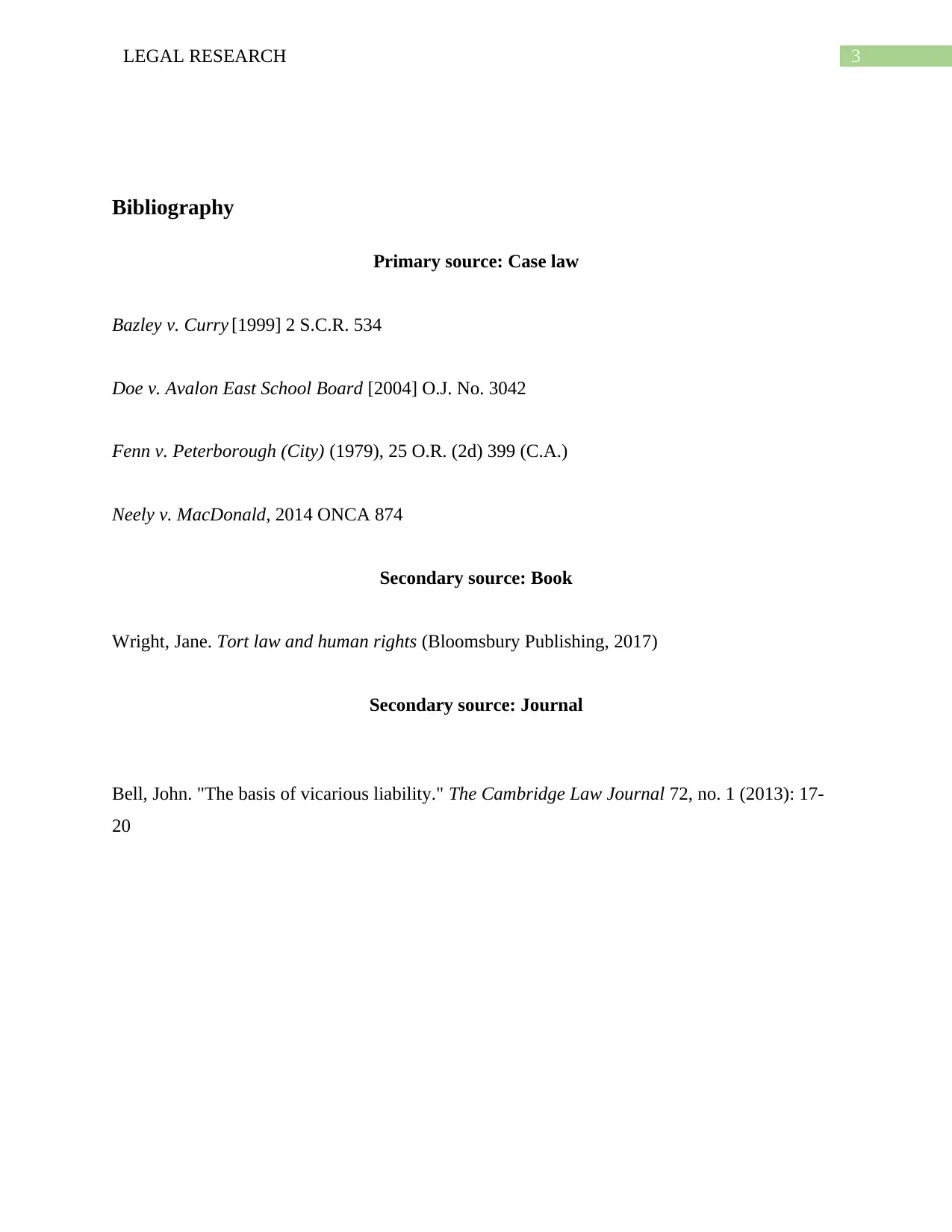Tort Law Case Study: Assessing Liability in Golf Course Injury
VerifiedAdded on 2023/05/29
|4
|775
|440
Case Study
AI Summary
This case study examines a legal research scenario involving a golf cart accident at Great Golf Course Inc., where Gill sustained injuries due to Dave's negligent operation of a faulty golf cart. The analysis focuses on determining the liability of Dave, Great Golf Course Inc., and its employee, Diane McDonald, under tort law principles. The discussion incorporates the English Common Law, relevant to Canadian tort cases, emphasizing the duty of care and vicarious liability. The conclusion determines that while Dave and Great Golf Course Inc. could be sued for negligence, Diane McDonald would not be directly liable, with the golf club bearing responsibility for her actions. The study references key case laws such as Bazley v. Curry and Fenn v. Peterborough, providing a comprehensive legal analysis of the situation.
1 out of 4






![[object Object]](/_next/static/media/star-bottom.7253800d.svg)